SURFE²R N1: SSM based electrophysiology
The SURFE²R N1 is designed for the measurement of electrogenic transporters (symporters, exchangers and uniporters) and pumps. Usually these proteins have low turnover rates compared to ion channels. SURFE²R technology compensates for that with a large sensor size which allows for the measurement of up to 109 transporters at the same time to yield the best signal to noise ratio.
What are the sample requirements?
- Source material: Sample preparation commonly begins either with recombinant overexpression in eukaryotic cell lines (CHO, HEK and COS-1), bacteria or yeast or with the isolation of membranes from native tissue such as heart, kidney, liver, brain, skeletal muscle or gastric mucosa from different organisms including pig, rabbit or mice. Cell free expressed transporters in nanodiscs as well as whole cells have been used for adsorption to the SSM, but usually purified samples are required.
- Membrane purification: When using isolated membrane samples, after cell disruption the membranes should be purified using a sucrose density gradient centrifugation. This is especially appropriate when membranes from distinct organelles like mitochondria, ER, synaptic vesicles or lysosomes are required. It is also commonly employed for the enrichment of plasma membrane fragments. Sucrose gradient centrifugation yields a significant signal enhancement compared to non-purified samples.
- Protein reconstitution: High turnover transporters usually work with membrane preparations. But they show lower signal to noise compared to reconstituted samples. The ideal sample therefore is prepared by protein purification followed by reconstitution into liposomes at high protein densities. Transporters with turnover rates below 100 s-1 should be characterized using proteoliposomes with low lipid-to-protein ratio (LPR) of 5 to 10. The LPR of successfully tested proteoliposomes range from 5 (LacY, turnover of 30 s-1) to 500 (NhaA, turnover of 1000 s-1). When using reconstituted samples it is critical to ensure that no residual detergent remains in the membrane preparation after reconstitution. Different procedures are described for detergent removal, e.g. rapid dilution or incubation with Bio-Beads. If detergent remains in the protein sample, the sensor can be destroyed during the adsorption process.
- Sample Concentration: The lipid concentration has to be optimized before starting the experiments. Start with a dilution sequence of the sample and check for the signal amplitudes. For your experiments then use a sample concentration achieving high signal amplitudes with the lowest sample consumption possible. Too high concentrations as well as too low concentrations can reduce the signal amplitude. The sample can be diluted in the respective non-activating buffer directly before the measurement. Usually lipid concentrations between 0.2 mg/ml and 5 mg/ml are used. In the case of membrane preparations with unknown lipid concentration, the total protein concentration can be used as a benchmark. Typical samples are prepared with 2 mg/ml to 10 mg/ml total protein concentration. For adsorption to the SSM total protein concentrations between 0.1 and 1 mg/ml are used. Since the concentration of the protein of interest cannot be adjusted directly, the output mainly depends on the expression efficiency which, therefore, also has to be optimized.
- Sample Volume: For each sensor 5 to 10 µl of the diluted sample is required. If the sample amount is critical this volume could be reduced even further. Therefore 50 to 100 µl could be enough for a rough characterization of the transporter. Depending on the measurement sequence it takes up to a few days to measure 100 µl of the sample.
What other specific considerations are relevant?
Partners offering this technique
MOSBRI reference partner site for this technique:
Other partners:
